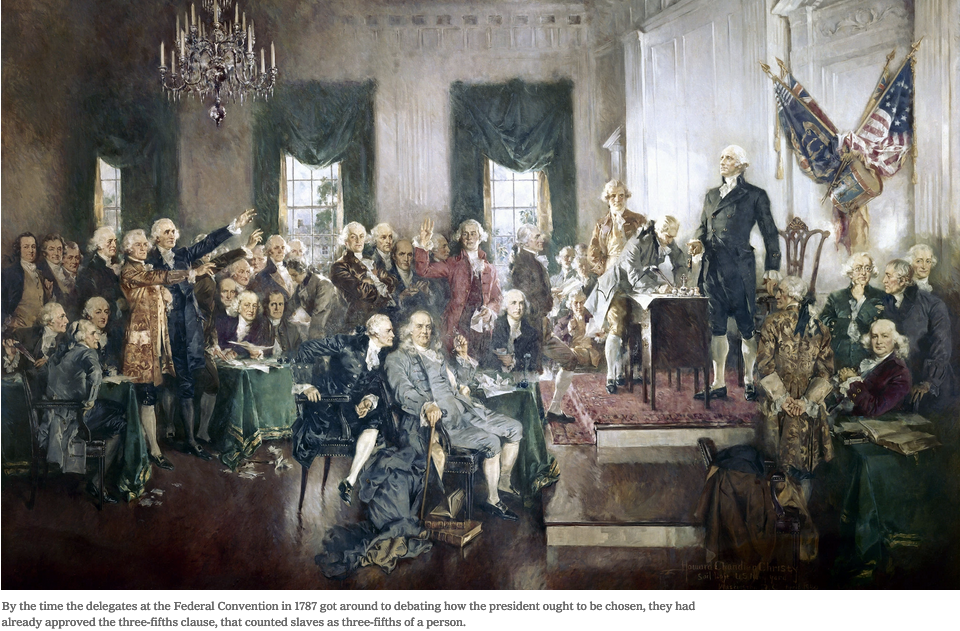I used to favor amending the Electoral College, in part because I believed the framers put it into the Constitution to protect slavery. I said as much in a book I published in September. But I’ve decided I was wrong. That’s why a merciful God invented second editions.
Like many historians, I thought the evidence clearly showed the Electoral College arose from a calculated power play by the slaveholders. By the time the delegates at the Constitutional Convention in 1787 debated how the president ought to be chosen, they had already approved the three-fifths clause — the notorious provision that counted slaves as three-fifths of a person to inflate the slave states’ apportionment in the new House of Representatives.
The Electoral College, as approved by the convention in its final form, in effect enshrined the three-fifths clause in the selection of the president. Instead of election by direct popular vote, each state would name electors (chosen however each state legislature approved), who would actually do the electing. The number of each state’s electoral votes would be the same as its combined representation in the House and the Senate.
By including the number of senators, two from each state, the formula leaned to making the apportionment fairer to the smaller states. Including the number of House members leaned in favor of the larger states. But the framers gave the slaveholding states the greatest reward: The more slaves they owned, the more representatives they got, and the more votes each would enjoy in choosing the president.




